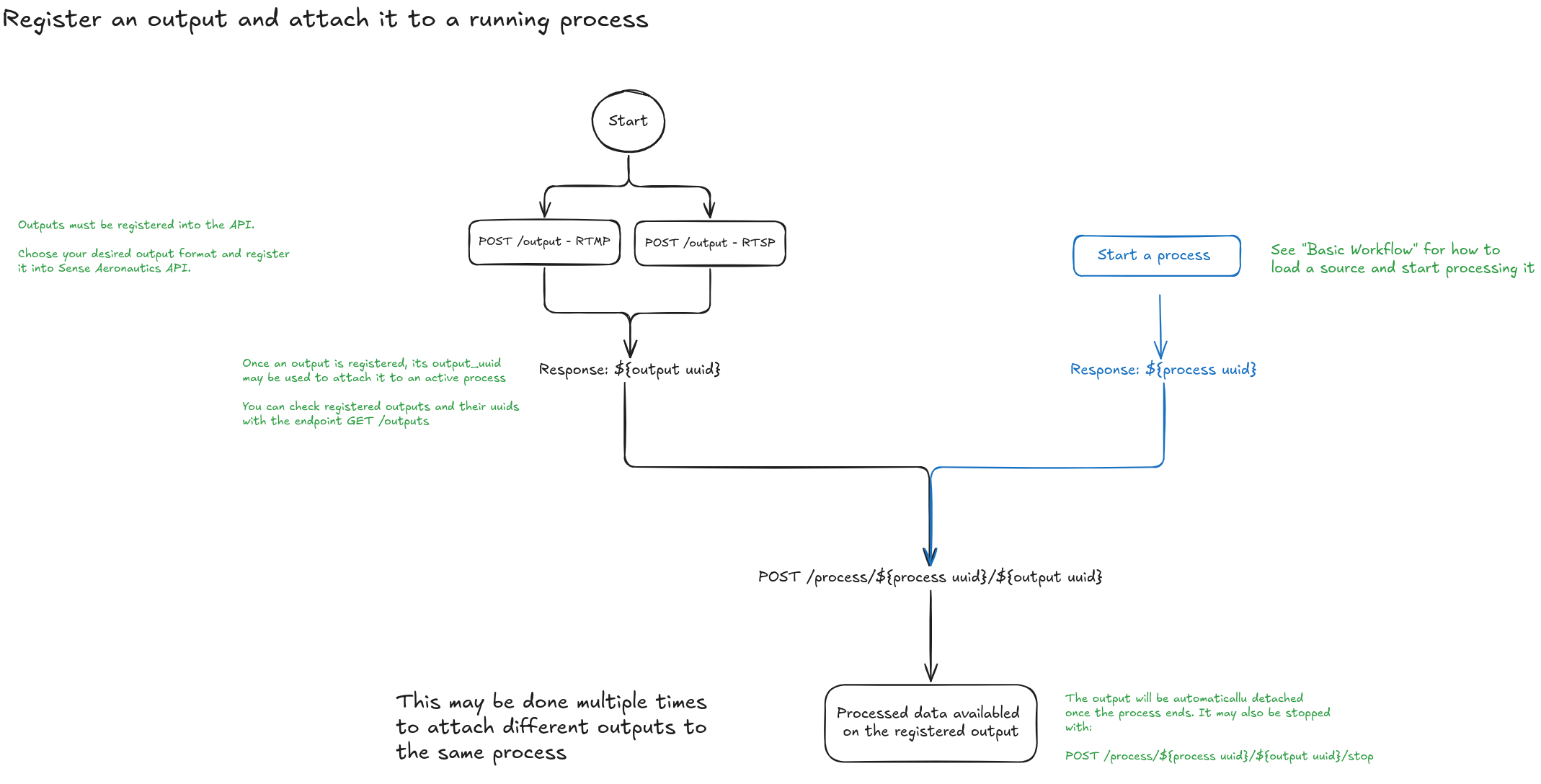Output workflow
Available outputs can be classified into two groups: video and json.
Video output
Consists of a stream of video with the overlayed detected bounding boxes and is available in multiple protocols. These outputs need to be pre-registered in the api (as explained here), selecting protocol and resolution, and then attached to an active process. The workflow looks like this:

In summary, to attach an output to an active process (generated as explained in the previous section), the following steps are required:
- Start the process and save its
process_uuid. - POST your desired output (as explained here) and save its
output_uuid.You may also use any previously registered output. Use the endpoint
GET /outputsto list all available outputs and their UUIDs. - Attach the output to the process using the endpoint
POST /process/{process_uuid}/{output_uuid}
Note that multiple outputs may be attached to the same process, so you could, for example, visualize the processed video stream through rtsp at two different resolutions.
For more details on supported output formats, see Output.
JSON data output
This is a stream of json objects with information about detected targets. The content of the messages is described in the output endpoint group. It is sent through a websocket connection. The websocket becomes available automatically once a process starts. Its path is constructed with the process_uuid as ws://{product}.senseaeronautics.com/process/{process_uuid}/detection_data. A single connection is allowed at a time. One message is sent for each processed frame.